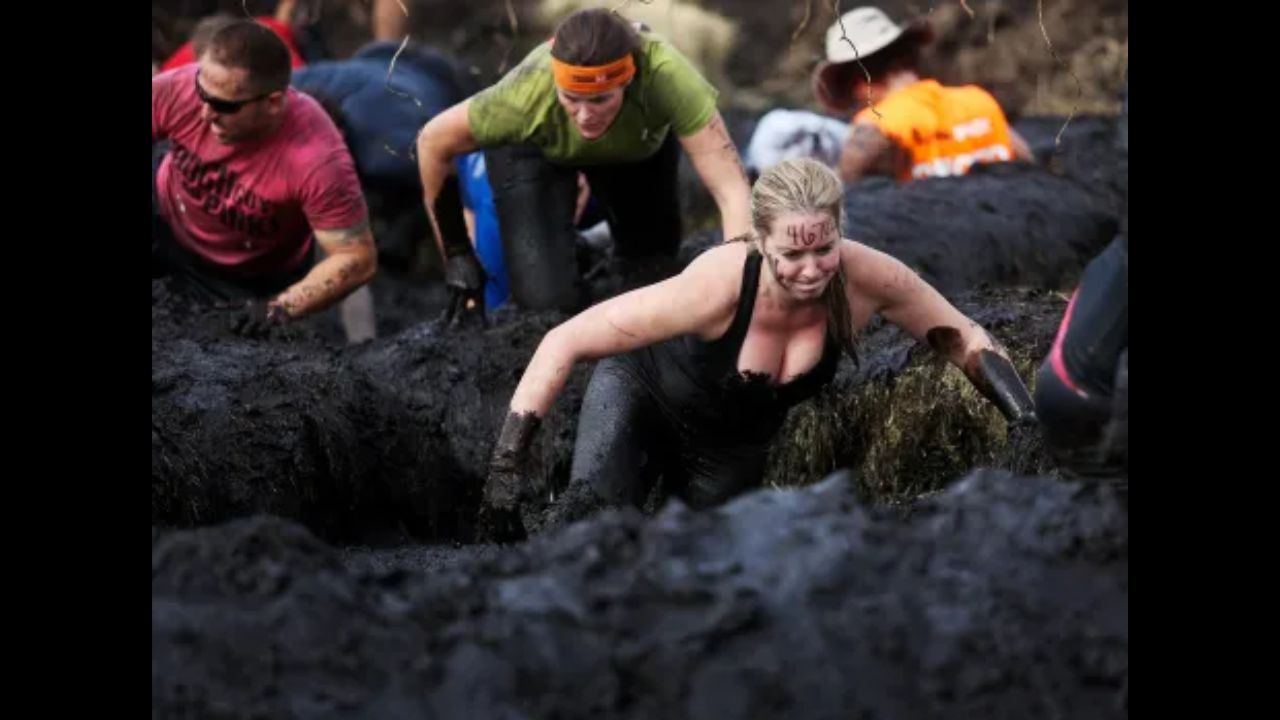Health Advisory Released Following Severe Tough Mudder Disease Case: Authorities in California have issued a warning after many people who ran in the Tough Mudder marathon and obstacle course competition over the weekend fell ill with unexplained illnesses.
Those who attended the event on August 19 and 20 at the Sonoma Raceway, an auto racing circuit located 30 miles north of San Francisco, reported numerous cases of rashes, fever, muscular soreness, nausea, and vomiting to the Sonoma County Department of Health Services (SDHS).
The SDHS suggests a connection to “Swimmer’s Itch,” also known as cercarial dermatitis. An allergy to parasitic mites causes this disease. It is common for these parasites to infest specific species of birds and mammals. Their eggs can infect certain species of aquatic snails after being introduced into water. Larvae from these snails burrow into human skin, causing the symptoms.
According to the SDHS, these symptoms are an allergic reaction to particular tiny parasites that cause “a minor illness called Swimmer’s Itch,” also known as cercarial dermatitis.
Health Advisory Released Following Severe Tough Mudder Disease Case
Should I make an appointment with a doctor?
If you have swimmer’s itch, you probably don’t need to see a doctor. If you’re feeling itching, try these solutions:
- Put on some corticosteroid cream for the skin.
- Painful areas should be treated with cold compresses.
- Indulge in an Epsom salt or baking soda soak.
- Soak in a tub of soothing colloidal oatmeal.
- Treat the rash with a baking soda paste (made by mixing equal parts baking soda and water).
- Use an anti-itch cream.
Don’t scratch even if you really want to. The rash could become infected if it is scratched. Your doctor may suggest medicinal lotions or creams if the itching is severe.
How can swimmers avoid becoming itchy when swimming?
To lessen the likelihood of developing swimmer’s itch,
- Do not enter water where indications indicate it may be hazardous or if swimmer’s itch has been a problem in the past.
- When swimming or wading in snail-infested swamps, keep your distance.
- Dry off promptly with a towel or a shower when you get out of the water.
- Do not attract birds (by feeding them) to locations where people will be swimming.
- Authorities should be urged to post warning signs in regions prone to swimmer’s itch.
Potential Reasons
A staph infection or a more serious illness caused by the bacterium Aeromonas hydrophila could potentially account for the symptoms. Aeromonas hydrophila is commonly found in freshwater or sewage and can cause serious difficulties in people, in contrast to the typically mild effects of staph infections.
The parasites can only live in the bodies of certain bird and mammal species. In humans, the eggs hatch into larvae that may infect water snails, which in turn release even smaller larvae that can burrow into the skin and cause symptoms like rashes.
However, the SDHS has hypothesised that Aeromonas hydrophila infections, which are far more serious than staph infections, may be at play here. Staphylococcus germs, as reported by the Mayo Clinic, cause only mild skin infections. However, if the infection spreads to vital organs like the heart, lungs, or bones, it might be fatal.
Aeromonas hydrophila, on the other hand, is more common in freshwater or sewage and, despite being uncommon, can infect humans, causing symptoms such as diarrhoea, kidney disease, hemolytic uremic syndrome (which occurs when the small blood vessels in the kidneys become damaged and inflamed, potentially leading to kidney failure), meningitis, and sepsis.
When ABC News reached out for comment, neither the SDHS nor the Tough Mudder event organisers got back to us right away. Participant Nicole Villagran said on a local ABC affiliate that she did not finish the Tough Mudder and was still sore and bumpy the next day.
Curtis Vollmar, one of 13 people who did the Tough Mudder event, told KGO TV that 12 of them are still experiencing the same symptoms.




